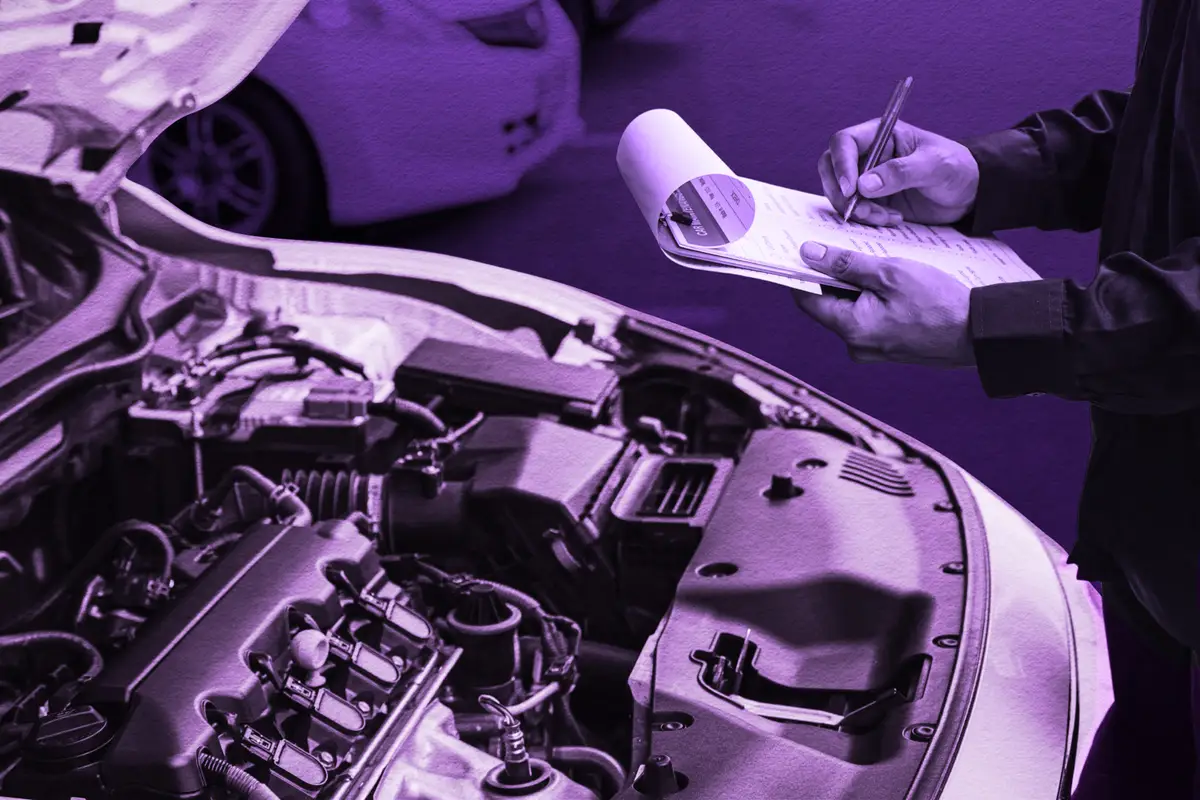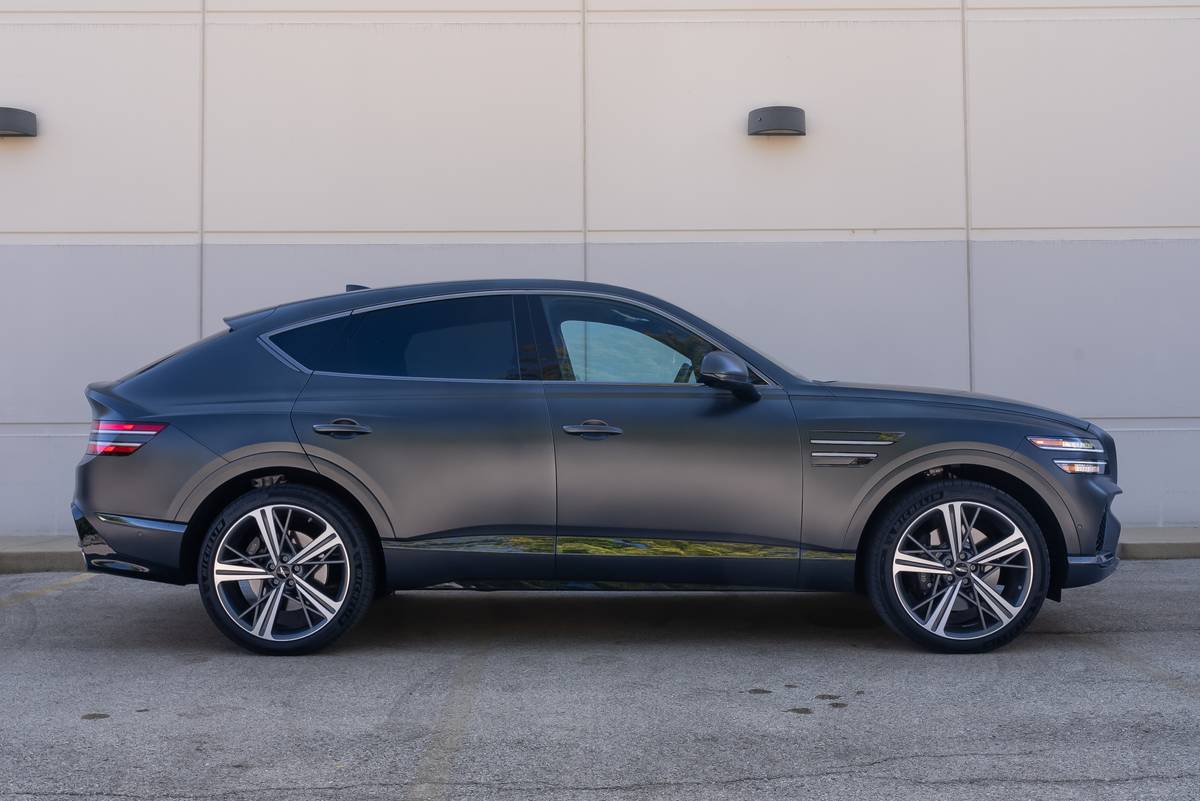PickupTrucks.com's view
The Chevy SSR pickup is certainly not for wanting of attention. It is, however, wanting for more buyers.
The SSR, which stands for Super Sport Roadster, started out as a highly publicized, highly praised concept vehicle at the 2000 Detroit auto show. Response was so enthusiastic from the press and public that GM practically started taking orders that week. The concept was edgy, distinctive and downright captivating. The production SSR came out in 2003 but has been selling an average of fewer than 1000 units a month? On more than one occasion last year, Automotive News reported a 300-day supply of SSRs was sitting idle on dealers’ lots; about 60 days inventory is ideal.
Early complaints focused on the lack of power. The first SSR was quite anemic with about 5000 pounds of mass and a 300-horsepower 5.3-liter V8/standard 4-speed automatic combo pirated from the regular truck lineup. For 2005, Chevy boosted the SSR’s performance with the 390-horsepower Corvette engine and made available a Tremec M10 6-speed manual transmission. The all-alloy 6.0-liter engine made the SSR a little lighter on its feet and the 6-speed put a little more spirit into its gait.
Yet, through the first four months of 2005, Chevy had sold just 3514 units. Lots of folks at GM are scratching heads over these numbers. So I spent a week in a new SSR to find out if there is a problem. Basically the truck is a beautiful show vehicle with a strong street-rod heritage and a healthy dose of hot-rod performance. But it also has the drawbacks of both street rods and hot rods. It’s expensive and only really serves as a third or fourth vehicle in a high-end garage. The SSR is built to cruise, not commute. It’s designed with much more style than function. In other words, it’s a chance for mainstream buyers to own a real concept vehicle normally found only at car shows.
There is no denying the magnetic appeal of the retro design. The production SSR exterior holds true to the concept that drew rave reviews. The full-fendered lines and horizontal-bar grille based on a ’53 Advanced Design Chevy pickup were shaped and smoothed with all the care of a master craftsman getting ready for the Oakland Roaster Show. The truck comes bathed in a vibrant, monochromatic color that is complemented with brushed aluminum trim and 5-spoke alloy wheels (19-inch front, 20-inch rear). Chevy blended in modern technology by adding a power retractable hardtop, wide-track rubber and updated suspension. But Chevy did not add much in the way of utility, and that strategy was intentional. Officials have said there are other Chevys designed for hauling and towing; this one is designed for the driving experience and ownership of a unique vehicle. They weren’t kidding, either. Towing capacity is 2500 pounds. Payload is a generous 1290 pounds, but there is no room under the hard tonneau and in the carpeted bed for anything other than luggage and golf bags.
My weeklong trip took me up the California coast highway where the SSR could be the perfect surfboard hauler for any trust-fund baby. It fits in with the beach crowd as comfortably as any woodie or Honda Element. The retractable top takes less than 30 seconds to bring in a full array of sunshine. Push a single button and the hardtop drops into its own storage area; the top doesn’t impede the limited cargo space in the bed.
Driving with the top down is not only refreshing but ego-building. The looks, stares and comments increase four-fold while in convertible mode. This is not a truck for the introverted. It draws attention with ease and there doesn’t seem to be any shortage of enthusiastic onlookers. Trips to the market take twice as long because of the conversations in the parking lot. Most people are shocked to hear that the SSR is a regular production vehicle. The unique design and resulting reaction from the public is one reason that of the eight or nine SSRs I’ve seen on the road, more than half have been dressed with business signs and graphics. It’s a great advertising vehicle for small stores
The interior is fashioned around a twin-cockpit design but doesn’t have the same refined, contemporary feel as the exterior. The horizontal bar theme is quite dominant as is the waterfall center console. The power window and power top controls are found on the aluminum bezel that surrounds the shifter. Further back on the console are hot-rod style gauges that are difficult to read at times. The E-brake handle is on the passenger side of the console.
I found the interior accommodations cramped with little shoulder room against the doors. And don’t try to adjust the power seats with the door closed. It’s nearly impossible to squeeze your hand down to the controls. With the top up, wind noise is among the highest of any convertible. But a ’32 street rod roadster isn’t much quieter or ergonomic. This is a hot rod with nice, leather seats and a booming Bose sound system. It’s for cruising, weekend drives and car shows. You’re already in a great mood going to these auto-enthusiast events, so a little discomfort won’t bother anyone. But tolerating the closed quarters after a 12-hour day at the office and spending two hours on the 405 freeway in 100-degree heat would take a toll on a normal motorist.
The SSR’s chassis and suspension is more suited to cruising than carving corners in the canyons. It’s stable but a little slow witted. It’s still a truck built on an SUV chassis. Engineers put extra effort into tuning the suspension-especially the steering-but the weight remains a major handicap. Traction control and a Torsen rear differential come with automatic while the manual foregoes the traction control and gets an Eaton limited-slip differential.
In summation, the SSR reminds me of the Isuzu VehiCross. Again, here is wild concept vehicle brought to life using an existing SUV chassis. The VehiCross was certainly more futuristic looking, so consumers had a difficult time identifying with it. The SSR has the heritage and a built-in identity. But the VehiCross was also was quite the conversation piece and drew plenty of attention. The main problem with the VehiCross was that it had a sports car exterior but a 2-door Trooper chassis underneath and weak V6 engine. Unlike the SSR which backs up its hot-rod image with almost 400 horsepower and a menacing exhaust note, the VehiCross didn’t come close to handling or accelerating like its persona would indicate. Not that the engineers didn’t try with a wicked set of remote-reservoir, extruded aluminum shock absorbers and special tuning. In a rally situation the VehiCross showed some promise, thanks to its 4-wheel-drive capability and generous ground clearance. The VehiCross is also similar to the SSR in that both vehicles utilized a unique stamping process, so engineering advances will be part of their legacies.
I had fun driving the VehiCross along the back roads of Hawaii, and I had fun driving the SSR up the California coast. But neither would be my choice as a first or second vehicle in a 3-car garage. I think SSR owners knew the truck’s limitations as well as its strengths when they purchased it. Customer satisfaction is probably higher than expected because of this understanding. The SSR’s starting price of $42,430 is steep-and most come in closer to $47,000 with the hot stereo and 6-speed-but so is the cost of any cool hot rod. There are intangibles that come with the SSR that offset criticisms that would normally hurt the truck. To be honest, I’m happy with my memories from admiring the concept five years ago. I’d rather spend the 45-grand building my own roadster, but I’ll certainly be one of the first to congratulate an SSR owner and pepper him or her with the well-deserved attention.
Latest news


10 Biggest News Stories of the Week: Jeep Wrangler Rides on Audi E-Tron GT, Chrysler Pacifica Hybrid

